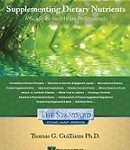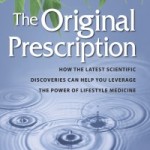According to the prevailing mantra, repeated in nearly every major media format, dietary supplements are completely (and shockingly) unregulated. We have been told that products can be made with no oversight, labels need not accurately disclose the contents of the product, and that outrageous claims of miracle cures are permitted without proof; furthermore, they claim that FDA has no power to do anything about it. The truth is, none of these characterizations are even remotely factual- no matter how often they are repeated.
The latest and loudest critique of the dietary supplement world has come from HBO’s John Oliver, where he ridiculed Dr. Oz’s congressional testimony on his “Last Week Tonight” show, before “exposing” the unregulated dietary supplement industry and the lawmakers he deemed responsible for allowing its deregulation. Whether or not you believe Dr. Oz is good or bad for the supplement industry (or the medical world in general), the ignorance of dietary supplement regulations displayed by Oliver was simply shocking and should be defined as a form of media malpractice. What Oliver has really exposed is a shockingly unregulated agenda-driven media industry; where humor, rather than truth, feeds the bottom line.
Of course, HBO is not the only offender. Nearly every medical journal editor or medical writer for news outlets permits similar statements to be printed without qualification. Even positive stories about dietary supplements include such statements. When Time magazine did a piece on the use of herbal medicine in the Cleveland Clinic, they included this gem in passing: “The FDA doesn’t regulate herbs and supplements.” A statement obviously written by someone who has never endured a 3-week FDA inspection of a dietary supplement manufacturing facility or read any of the hundreds of warning letters sent by FDA to supplement company owners; or for that matter, has taken the time to peruse the hundreds of pages of guidelines outlining how FDA regulates the dietary supplement industry.
But there appears to be something more insidious going on of late. For years we have had to deal with these unwarranted statements, usually tagged on to the latest adverse event report or “failed” vitamin study (see my blog on editorial bias in research media). However, over the past several years there seems to be an increasing emphasis in these statements targeting DSHEA (the Dietary Supplement Health Education Act) and those in congress who believe it to be a sufficient framework to protect the American people from harm while allow appropriate access to dietary supplements. Oliver went out of his way to point out that it was the massive amount of money used to lobby congress that has led to the shocking lack of regulation. Again, the unregulated staffers on Oliver’s HBO show must have been short on time to do some fact checking, so we will help them out.
According to Opensecrets.org (the same source used by Oliver) the dietary supplement industry’s lobbying dollars reached their peak in 2013 at $3.6 million. How does this compare with the pharmaceutical industry? Well in 2013, the pharmaceutical industry spent over $140 million lobbying congress (the highest amount of all industry sectors). If lobbying dollars equates to deregulation, as Oliver clearly concludes, then he and HBO must have a mini-series in the works exposing Big Pharma. And these numbers pale in comparison to the promotional dollars used by pharmaceutical companies to lobby doctors, insurance companies and consumers. In 2012, nearly $15 billion dollars was spent detailing doctors, including another $5 billion in free samples. When you total all the promotional dollars, including over $3 billion in direct to consumer marketing, the pharmaceutical industry spent over $27 billion in 2012 (an amount equaling 85% of the total revenues of all dietary supplements that same year). Remember that the amount of money spent in advertising by pharmaceutical companies is mostly spent through the same medical journals and media outlets claiming dietary supplements are unregulated- a coincidence, perhaps.
This is such an important topic that when putting together our last book (Supplementing Dietary Nutrients- A Guide for Healthcare Professionals), we specifically wanted to tackle this issue head-on. Not only is there a large chapter on the nuances of dietary supplement quality control and regulatory issues, we were able to reprint the HerbalGram article “Myths of an Unregulated Industry Dispelled” in its entirety (thanks American Botanical Council). This is a must-read for anyone who questions whether FDA has the ability or authority to properly regulate the dietary supplement industry or anybody recommending the use of dietary supplements to others.
Like all regulated industries, the dietary supplement world has companies and rogue players at its margin. Nearly all of the issues related to dietary supplement safety have come from these groups- mostly in the form of products that contain illegal drugs masquerading as dietary supplements for weight loss, sexual enhancement or sports performance. The responsible majority of dietary supplement companies would like to see FDA use its authority to remove these players from the market, an authority given to them by congress through DSHEA. So the next time you read an article declaring that FDA has no ability to regulate herbs or dietary supplements, you ought to consider asking which is more regulated: the dietary supplement industry or the media declaring it unregulated.
Get our new book: Supplementing Dietary Nutrients- A Guide for Healthcare Professionals Today.
Available for Healthcare Professionals at the Lifestyle Matrix Resource Center or directly from our site here.
If you want to know when Dr. Guilliams’ posts future blogs or when a new whitepaper is available, “Like” us on our Facebook page.
To get Dr. Guilliams’ earlier book, The Original Prescription– you can purchase directly from the Point Institute , The Lifestyle Matrix Resource Center (professional discounts available), or Amazon.
And don’t forget to sign up for our blog at the bottom of this page!


